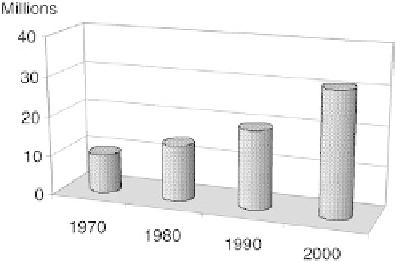Agriculture Reference
In-Depth Information
has specific traditions calling for serving of goat or lamb meat as part of a meal. In some
cases there is even a prescribed method of harvest such as the Halal and Kosher
methods for Muslim and Jewish markets. In China, the demand for goat meat is stronger
in the 6 colder months of the year. Most parts of Africa have a steady year-round
demand with greater sales around religious holidays.
Under natural conditions, sheep and goats will produce lambs and kids during the
spring months of a year. They will be ready for marketing 2 to 4 months later. This is
not a problem for holidays with a relatively fixed date such as Easter, Passover, or
Navadurgara. The Muslim calendar poses a complication for the supply of goat and
lamb meats for religious holidays. Muslim holidays follow the lunar calendar, which
shifts the holiday about 10 to 11 days each year relative to the Gregorian calendar.
This means that these holidays often fall in periods when the natural breeding cycles
of sheep and goats do not provide young animals for market. Modern husbandry prac-
tices can shift the production cycle as much as 2 or 3 months to compensate for this
market shift.
Marketing channels from producers to consumers are fairly well established in the
industrialized countries. The animals first go from the producer to local auctions or to
marketing cooperatives. The animals then go either to local processors or regional auc-
tions and then to processors. The packaged meat products go through the grocery
wholesale and retail chain before they reach consumers. In a few cases producers
may sell directly to individual consumers.
In the United States these marketing channels are still being established in many
parts of the country. Prior to 1991 the United States was a net exporter of goat meat.
Beginning in this year, imports were higher than exports and in 1994 there were no
exports of goat meat. The United States must now import goat meat from Australia
and New Zealand. This increase in demand within the United States is linked to the
rapid rise of foreign-born residents, both naturalized and noncitizen shown in
Figure 7.24. Their desire for familiar meats has led to a corresponding increase in
goat and lamb production in the United States.
Sheep and goat production in other countries suffer from the same lack of
refrigeration as beef products. Goat and sheep farmers have established markets, but
Figure
7.24.
Foreign-born United States residents.









